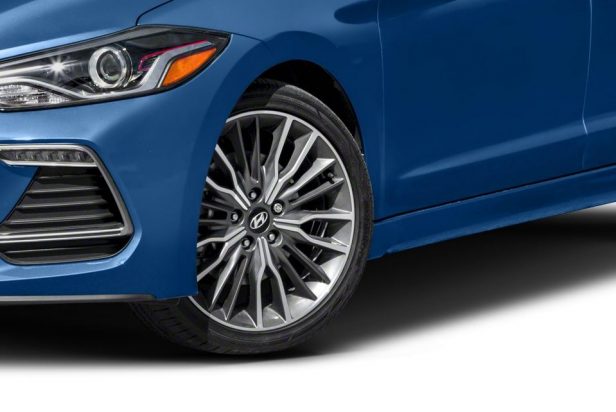 A U.S. Navy lieutenant says he was driving a new Hyundai when suddenly the wheel malfunctioned, causing the car to cross lanes of Interstate 95. (Photo: Hyundai)
A U.S. Navy lieutenant says he was driving a new Hyundai when suddenly the wheel malfunctioned, causing the car to cross lanes of Interstate 95. (Photo: Hyundai)
A Connecticut jury recently found that the front driver's side wheel of a new Hyundai Elantra was not defective when the vehicle crossed lanes of a highway, injuring the driver.
|The lawsuit
In his September 2015 lawsuit, Ryan Brown Jr., a 28-year-old U.S. Navy lieutenant, says he was driving the new vehicle, which he had purchased 13 days earlier, when suddenly the wheel malfunctioned, causing the car to cross lanes of Interstate 95 in Old Lyme, Conn., before eventually being brought to a stop in the median.
The lawsuit says no other vehicles struck Brown's car, but Brown did say he was “violently thrown about the interior of the vehicle,” suffering orthopedic injuries requiring multiple surgeries and resulting in permanent disabilities. The lawsuit said Brown has suffered lower back pain, chronic pain to his right shoulder and right hip and intermittent lateral ankle pain.
|The verdict
In interrogatories, a six-person New London Superior Court jury answered a key question July 3, which sealed the verdict for the defense: “Was the subject wheel defective because it did not comply with design specifications or performance standard?”
Recommended For You
Want to continue reading?
Become a Free PropertyCasualty360 Digital Reader
Your access to unlimited PropertyCasualty360 content isn’t changing.
Once you are an ALM digital member, you’ll receive:
- Breaking insurance news and analysis, on-site and via our newsletters and custom alerts
- Weekly Insurance Speak podcast featuring exclusive interviews with industry leaders
- Educational webcasts, white papers, and ebooks from industry thought leaders
- Critical converage of the employee benefits and financial advisory markets on our other ALM sites, BenefitsPRO and ThinkAdvisor
Already have an account? Sign In Now
© 2025 ALM Global, LLC, All Rights Reserved. Request academic re-use from www.copyright.com. All other uses, submit a request to [email protected]. For more information visit Asset & Logo Licensing.








